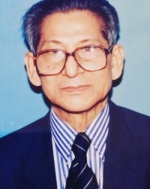|

Custom Search
|
|
Dermpath-India Pathology of Aggressive Angiomyxoma Dr Sampurna Roy MD 2023
|
 |
|
Aggressive angiomyxoma is a rare locally aggressive mesenchymal tumour
which was first described by Steeper TA and Rosai J in 1983. The tumour infiltrates locally and has a high risk of local recurrence after excision. Recurrence may occur many years after initial resection, hence a long term follow-up is required. Recurrence of the tumour may be avoided by wide local excision.
The tumour has no potential to metastasize. The tumour usually arises from the soft tissues of the pelvic region, perineum, vulva, buttock.
Rarely this tumour occurs in males in the
scrotal region. Rarely, the tumour occurs in males in the scrotal region and presents as a scrotal mass, a hydrocele or a hernia. On gross examination the tumours are lobulated, soft to rubbery, solid masses, usually more than 10 cms in diameter. The cut surface reveals a glistening, soft homogeneous appearance. Recurrent tumours show more prominent areas of hemorrhage and fibrosis
Immunohistochemical staining reveals that the tumour cells are immunoreactive for desmin, muscle specific actin and vimentin. Estrogen and progesteron receptor protein may be positive.
The tumour cells are
immunonegative for S100 protein, Factor VIII related antigen,
carcinoembryonic antigen and cytokeratin. HMGIC expression in aggressive angiomyxoma is of value in the distinction of difficult cases from its histological mimics. Differential Diagnosis:
Unlike aggressive angiomyxoma this tumour exhibits the
following features: Tumour size less than 8 cm , well circumscribed border,
non infiltrative tumour, higher cellularity, prominent vascularity, plump
stromal cells, minimal stromal mucin and rarely extravasation of red blood
cells. Small lesion, less than 3cm in diameter. The tumour is composed of spindle cells, bundles of collagen, hyalinized blood vessels and mature adipocyts, set in a loose cellular stroma. Mitotic figures are conspicuous in some cases.
Immunohistochemistry reveals immunopositivity for CD34 and immunonegativity for actin, desmin and S100 protein.
In
problematic cases immunostains play an important role in establishing the
diagnosis. The differential diagnosis also includes fibroepithelial polyps, intramuscular myxoma, spindle cell lipoma, myxoid neurofibroma, fibromatosis, myxoid liposarcoma, myxoid leiomyosarcoma, embryonal rhabdomyosarcoma and myxofibrosarcoma.
|
|
|
Visit:-
Infectious Disease Online
 Prof (Dr) Haradhan Roy MD (AIIMS) (1928-2022) (R) Director-Professor and Head of the Dept of Pathology, Calcutta National Medical College, Calcutta University India |

|

